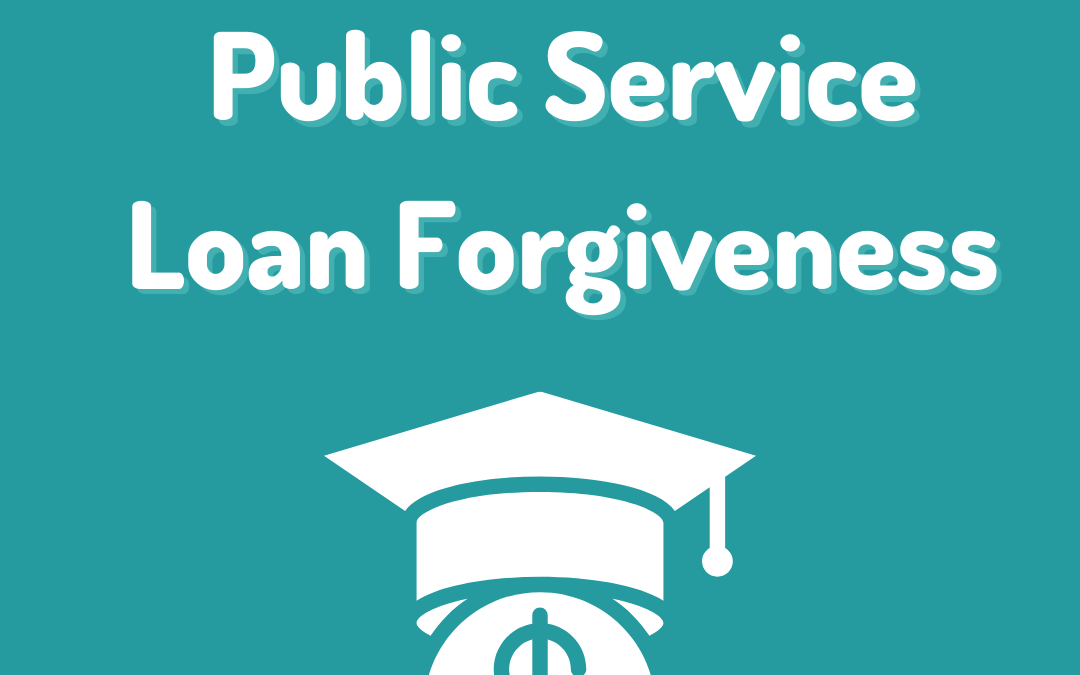One of the most popular student financial aid programs managed by the U.S. Education Department (ED) is the Public Service Loan Forgiveness (PSLF) program, and it’s easy to figure out why. PSLF promises Federal loan holders that, upon meeting requirements pertaining to public service employment, the ED will wipe away a large part of their debt. But it isn’t as simple as it sounds. As is the case with other financial aid programs — the devil’s in the details!
The PSLF program was implemented to forgive student loan debt for employees of public service and nonprofit jobs. It erases whatever remains of borrower’s debt after they’ve made 120 qualifying payments while working for eligible organizations. For most borrowers, this means working for 10 years before receiving loan forgiveness. Of course, after 10 years of repayment, the loan balance is much smaller than it was at origination. But if a borrower is heavily into debt from student loans, PSLF forgiveness can still be a huge financial relief. The average amount forgiven is $66,667.
Employers That Qualify for PSLF
The PSLF program is available to employees of the following organizations:
• Federal, state, local, or tribal governments,
• 501(c)(3) nonprofits,
• A not-for-profit organization that’s not 501(c)(3)-designated, but meets other requirements related to public service, and
• AmeriCorps and the Peace Corps.
A borrower’s specific job is irrelevant as long as the organization is in one of these categories. However, if a borrower performs work of a religious nature at a qualifying organization, it doesn’t count toward as meeting the requirements. The ED states that “time spent on religious instruction, worship services or any form of proselytizing is not eligible.”
A borrower doesn’t need to work for one employer during the entire 120-month period. They’re free to change jobs but, for it to count toward the 120 months, new employers must also qualify. All jobs must be full time.
Steps in Obtaining PSLF Forgiveness
To obtain loan forgiveness, it’s necessary to meet all of the program’s requirements year after year. Unfortunately, some borrowers who have counted on PSLF have discovered — 10 years later — that they didn’t meet all the criteria. If a student wishes to benefit from the program, they should thoroughly understand it to ensure that they’re on track to qualify for forgiveness.
Eligible Student Loans and Payment Plans
Any loan made under the Federal Direct Loan Program can qualify for PSLF. These include Subsidized and Unsubsidized Stafford Loans, PLUS Loans, and Federal Direct Consolidation Loans. Although the FFEL or Perkins loan programs have been discontinued, they can be converted into a Direct Consolidation Loan and thereby qualify for PSLF.
In addition, eligible loans need to be on an eligible repayment plan in order to qualify. The ED’s Income Driven Repayment (IDR) plans that qualify for PSLF are the following:
• Revised Pay As You Earn,
• Pay As You Earn,
• Income-Based Repayment, and
• Income-Contingent Repayment.
Steps to Qualify for PSLF
Eligible payments become qualifying payments when a borrowers submits the PSLF application form. In November 2020, ED introduced one form for PSLF and employment certification. The form is titled, “The Public Service Loan Forgiveness (PSLF) and Temporary Expanded PSLF (TEPSLF) Certification and Application”. It is available at studentaid.gov/pslf
Each borrower has an organizations called a loan servicer assigned by the ED to handle billing and other matters for their account. The following are the loan servicers that work for ED: FedLoan Servicing, Great Lakes Educational Loan Services, Edfinancial, MOHELA, Aidvantage, Nelnet, OSLA Servicing, ECSI, and Default Resolution Group. These are the organizations that process the PSLF applications of borrowers and they are the first point of contact for borrowers regarding their PSLF applications.
Information that borrowers will need for the application includes:
• The borrower’s Financial Aid ID when loan was originated,
• The borrowers W-2 forms,
• The EIN numbers of employers, and
• The dates of employment for each eligible employer.
The borrower must submit the completed application by uploading it to MOHELA.com (if they are the loan servicer), by U.S. mail, or by fax.
Recently Announced Improvements to the PSLF Program
In April 2022, the ED announced one-time improvements to address historic inaccuracies in the count of payments that qualify toward PSLF and IDR forgiveness due to practices by loan servicers that put borrowers into forbearance in violation of ED rules. As a result of these failures, borrowers who were in repayment for 20 years or more were unable to obtain forgiveness, and borrowers who were in repayment for 10 years or more while working in public service did not receive forgiveness even if they were eligible. To remedy these failures, the ED will adjust a borrower’s account by granting credit toward PSLF for:
• Any month in which a borrower was in a repayment status, regardless of whether payments were partial or late, the loan type, or the repayment plan.
• Any month in which loans were in an eligible repayment, deferment, or forbearance status prior to consolidation.
• Months while a borrower spent at least 12 months of consecutive forbearance.
• Months while a borrower spent at least 36 cumulative months in forbearance; and
• Any month spent in deferment prior to 2013.
On October 25th, the ED announced one-time executive actions that will bring most eligible loans managed by it closer to forgiveness. These actions will provide borrowers with the same benefits already going to those who applied for PSLF under the temporary changes that began in April and ended on October 31, 2022. Borrowers with Direct Loans or Department-managed FFEL loans will receive credit toward forgiveness for all months spent in repayment, including payments prior to consolidation, and regardless of whether they made partial or late payments.


Recent Comments